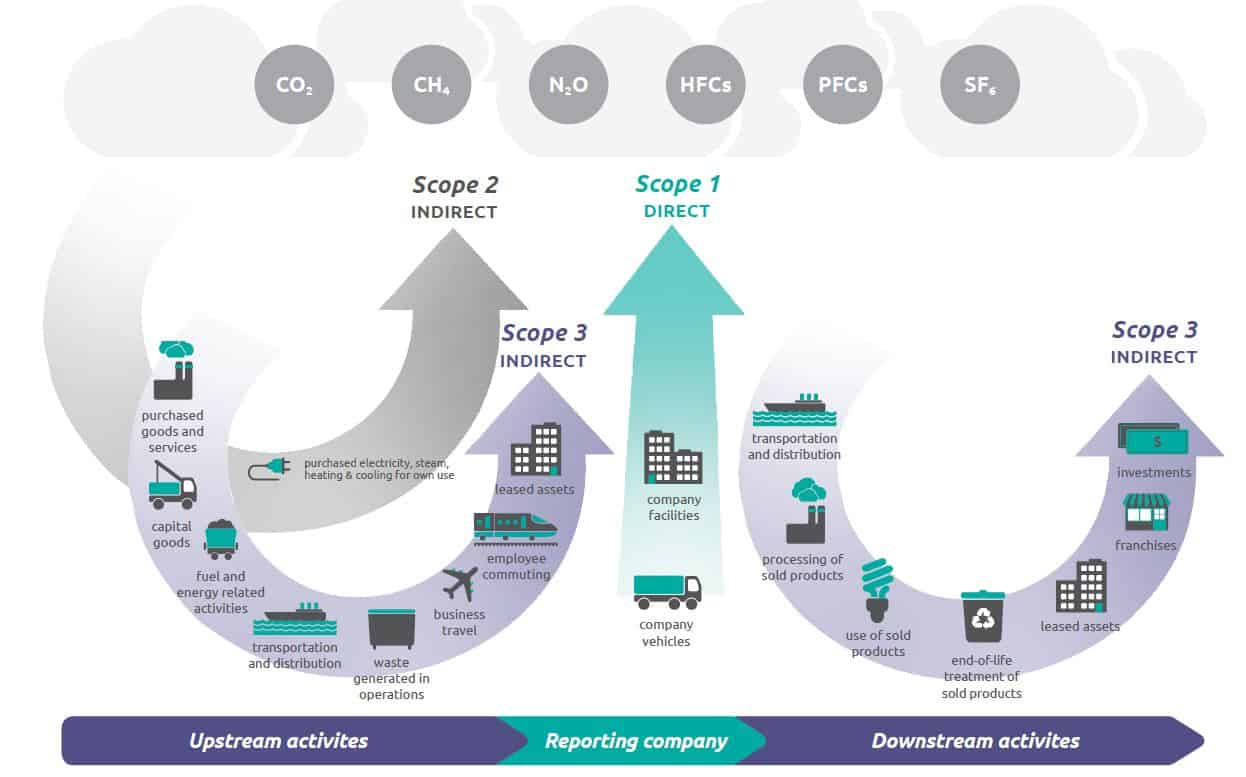Setting science-based targets for carbon emission reduction: five key considerations
To reduce greenhouse gas emissions, science-based targets provide a roadmap for companies. Targets are defined as science-based if they are in line with what is required to keep global temperature increases below 2°C above pre-industrial temperatures – no easy task. Sustainability expert Ryan Burrows offers guidance and advice for those about to start.
The effects of the coronavirus pandemic have been widespread. However, the impacts from climate change are estimated to be far greater[1]. Addressing this urgent issue requires a significant long-term shift in behavior.
As the pace of change towards low carbon solutions and climate resilience accelerates, businesses will need to have robust mitigation plans in place. The Science Based Targets initiative (SBTi) provides companies with a key route map to tackling climate change over the long term and are an effective way for businesses to know that they are taking the right measures to prepare for a low carbon future.
What is the Science Based Target initiative?

Science-based targets are greenhouse gas (GHG) emission reduction targets that are ambitious enough to avoid the worst effects of climate change. This was defined in the Paris Agreement as limiting the global temperature increase to no more than 2°C.
Companies can set their own targets by going through the process laid out by the Science Based Target initiative (SBTi). The SBTi is a collaboration between a variety of organisations that defines best practice, provides tools and independently assesses targets, among other things.
As they are based on climate science, science-based targets must be regularly updated in line with the latest research. This process is also laid out by the SBTi.
AECOM is the first US-based company in the engineering and construction sector to set officially validated targets through the SBTi. At the end of a year-long process, we received official validation for two targets:
- 20 percent reduction in operational GHG emissions (fleet vehicles and office energy) by 2025, compared with 2018.
- 10 percent reduction in supply chain GHG emissions by 2025, compared with 2018.
Five helpful tips
Given their robust nature, there has been a rapid uptake and discussion on setting science-based targets across the industry. Here are five points to consider when starting the process.
1/Get leadership buy-in
Setting science-based targets is a serious commitment and requires senior leadership sign-off. Prepare a business case using the resources on the SBTi website so that leadership can make an informed decision. Getting leadership buy-in at an early stage can increase exposure within the company and help with the collection of data as the process requires significant collaboration from teams including real estate, travel, procurement, operations, finance and sustainability.
2/Read the resources and use the tools
This is going to be a complex task so make use of the broad range of resources and tools available on the SBTi website, the most important of which are the Science-based Target Setting Manual, SBTi Criteria, and Foundations of Science-based Target Setting. The Greenhouse Gas Protocol website also has useful in-depth resources. There are also some freely available reporting tools such as the SBTi’s Science-based Target Setting Tool as well as the Scope 3 Evaluator developed by the GHG Protocol and Quantis.
3/Screen your Scope 3 emissions early
Scope 3 emissions are complex. They comprise indirect emissions from up and down the value chain, which includes goods and services purchased, business travel, employee commuting, as well as transportation and use of sold products, among other things (See Figure 1). If Scope 3 emissions form a significant part (40 percent) of total emissions, a Scope 3 target will be needed. This will be the case for majority of companies.
Companies usually have little information on or influence over Scope 3 emissions so do a high-level screening as early as possible using the Scope 3 Evaluator Tool. This will identify areas of focus that have the most impact on emissions footprint.

4/Don’t let perfect get in the way of good
Collecting data from all areas of operations is a big ask. While obtaining accurate real data is important, it shouldn’t hinder the process. There are numerous ways to estimate data and as long as you are transparent, follow the best practice you can, and aim for continuous improvement then you’re doing better than most.
5/Use it as a motivator for action across the company
Publicly committing to setting science-based targets is a big step. It leaves companies exposed to scrutiny, especially if they renege on their pledge further down the line. On the other hand, it can be a strong motivator for action within the company, while sending out a clear and positive message to both the wider public as well as clients. Once set, the targets should be communicated externally and internally. It is vital that employees can relate personally so that they take ownership of the targets; success will depend upon it.
An extremely effective first step on the road to carbon reduction
Setting science-based targets is an important first step in following the science to avoid the worst effects of climate change. The process is complex but possible with the help of the many excellent resources available. Furthermore, science-based targets are an excellent motivator for long-term positive action.
[1] https://www.weforum.org/reports/the-global-risks-report-2020






